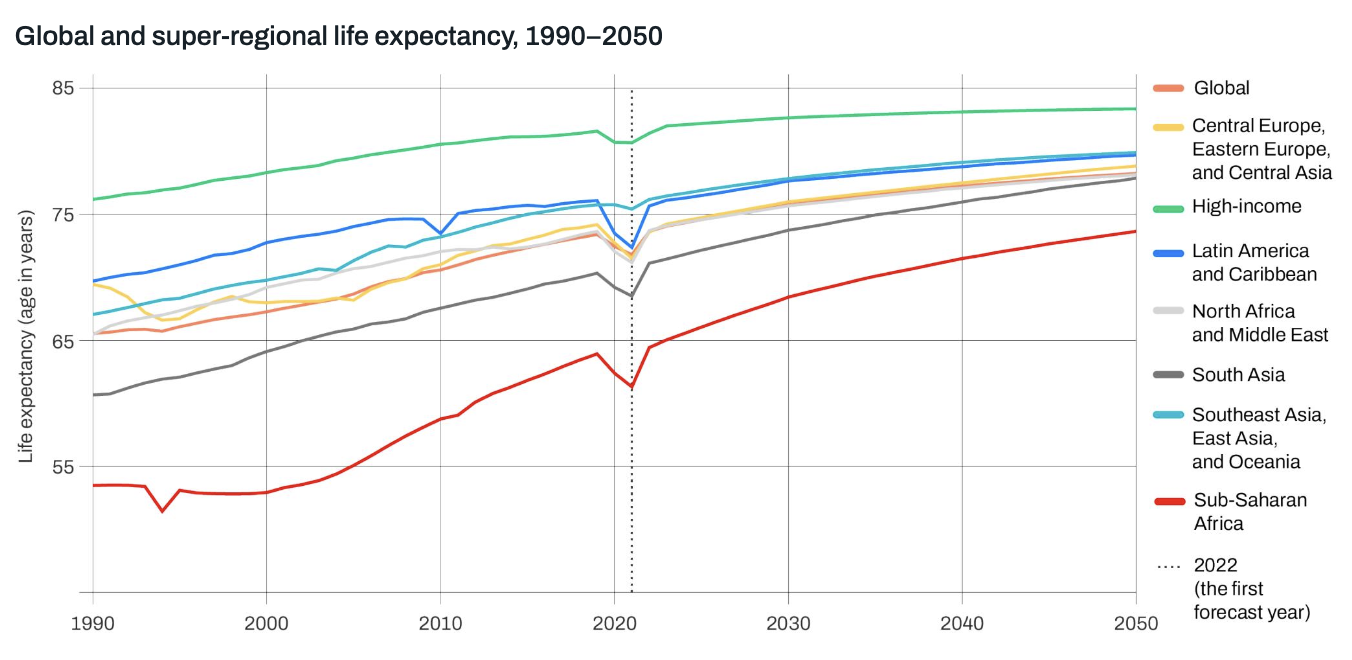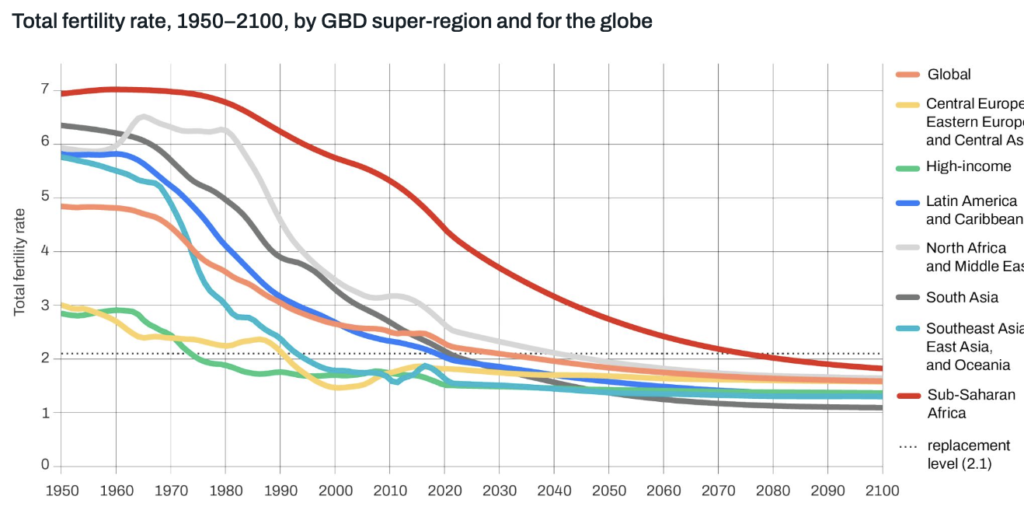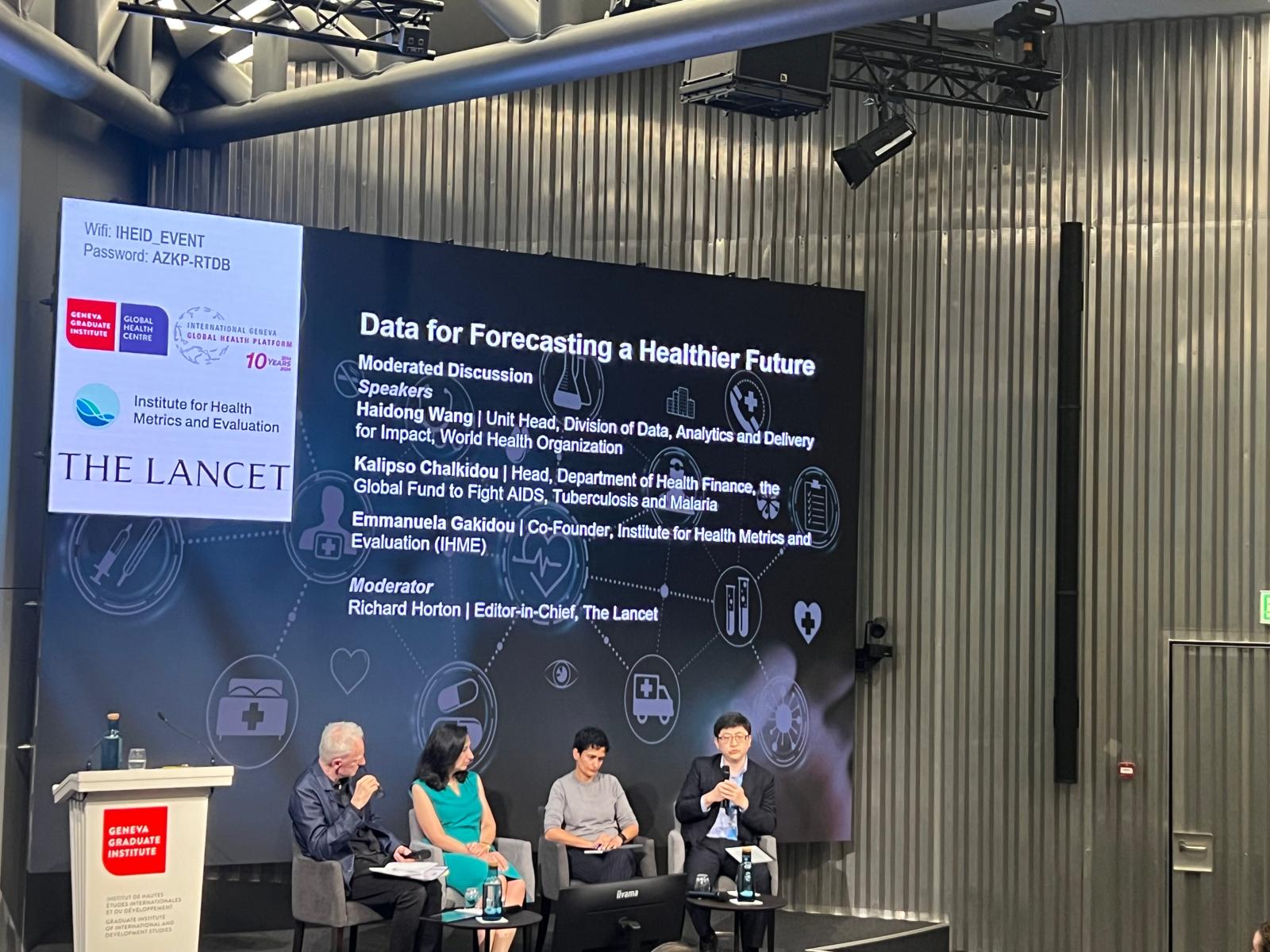GENEVA — Six of the ten leading risk factors for premature deaths and years of healthy life lost due to disability are within an individual’s control, according to new data from the Global Burden of Disease Study 2021. When malnutrition and air pollution, which are also influenced by human actions, are included, the figure rises to 80 per cent.
The study, the most comprehensive effort to quantify health loss worldwide to date, aims to identify and eliminate disparities in health systems. Its findings were discussed on Monday at the Geneva Graduate Institute’s Global Health Centre during a side event of the 77th World Health Assembly.
The top 10 risk factors identified in 2021 were malnutrition, air pollution, high blood pressure, tobacco use, unhealthy diets, high blood sugar, obesity, high cholesterol, kidney dysfunction, and occupational hazards.

“In the absence of a major health innovation, these factors are predicted to remain relevant over the next several decades,” said Emmanuela Gakidou, co-founder of the Institute for Health Metrics and Evaluation (IHME)at the University of Washington, which conducted the study. “If we intervene, we can change the global burden of disease.”

The study examined 459 health outcomes and risk factors, drawing on data from over 12,000 collaborators in 163 countries and territories. It utilized a total of 316,737 data sources, including government reports, surveys, and health sector data.
The 2021 data was released later than usual due to the pandemic’s impact on the organization’s work. Dr. Gakidou stressed that the report not only tackles the pandemic-induced backlog but also highlights the growing challenges in collecting data from conflict zones, an increasingly significant issue as global conflicts persist.
“We struggle to get data from countries in conflict and on populations that are displaced by conflict or have natural displacement, and we know there are conditions that get exacerbated by conflict,” she said.
IHME aims to release 2023 data by December 2024 and 2024 data by November 2025, she noted.
The latest report’s results have “profound implications for future thinking of how [countries] should be organizing their health systems [and] social sectors.”
“This is a graph of hope,” Gakidou remarked as she displayed a graph of the leading risk factors. “Things can be done [to reduce] many of them.”
Life Expectancy Disparities Persist Despite Global Gains

The GBD study revealed that COVID-19’s impact on life expectancy varied across the globe. Yet, even when adjusting for the pandemic’s effects, disparities in life expectancy improvements remain evident among different regions.
From 1990 to 2021, life expectancy rose by 8.3 years in Southeast Asia, East Asia, and Oceania, while Central and Eastern Europe and Central Asia saw a mere 2.1-year increase.
Sub-Saharan Africa, despite a 7.8-year improvement driven by advancements in treating diarrhoea, pneumonia, and communicable diseases, as well as reducing neonatal mortality, still lags behind with the world’s lowest life expectancy. The gap between this region and others has not significantly narrowed in the past three decades.
Kalipso Chalkidou, head of finance at the Global Fund to Fight AIDS, Tuberculosis and Malaria, pointed out that just 15 countries, accounting for about 5% of the global population, are responsible for 40% of the worldwide decline in mortality. Diseases such as tuberculosis, AIDS, and malaria contribute to nearly half of this figure.
Dr. Gakidou also emphasized that the lack of progress in addressing non-communicable diseases is a significant factor in the regions struggling to keep pace with life expectancy improvements.
Data Gaps Grow as Conflicts Rage
Furthermore, among the numerous challenges highlighted in the report, Dr. Gakidou stressed the increasing difficulty and relevance of gathering data from conflict zones as conflicts escalate worldwide.
“This is an area of huge interest and a massive data gap,” Dr. Gakidou said. “We struggle to obtain data from countries in conflict and on populations displaced by conflict or natural disasters, knowing that these conditions exacerbate existing health issues.”
More Deaths Than Births in Many Countries

Over half of the countries in the study are now “below replacement level,” with more deaths than births. Nearly all countries are projected to face this reality by 2100.
By 2100, over 30% of births will occur in regions classified as low-income by the World Bank, while births in middle- and upper-income countries will decrease by 20%.
“This has significant implications for where these babies are born, what they will need to do well and thrive, and could have implications on migration and other trends around the world,” Gakidou said.
A new global health landscape?

The discussion on the data concluded with a vision of an emerging global health landscape. What does this new landscape look like?
Chalkidou, speaking on a panel alongside Gakidou, Richard Horton, editor-in-chief of The Lancet, included and Haidong Wang, unit head of the Division of Data, Analytics and Delivery for Impact at the World Health Organization, pointed to the need to change the global health “architecture.”
“I think we need to change the way things are hardwired to get different results,” she concluded.
Wang, meanwhile, said that to envision a new landscape, “we need to remind ourselves how fragile the gains in population health are.”
“Just in two years of the pandemic, we lost a decade,” he said, alluding to the importance of sustaining investment in public health.
As the session drew to a close, Gakidou struck a more optimistic tone.
“People value health over everything else. I think that the global community has demonstrated that very visibly,” she said. “I think the new global health landscape … is one where health continues to be valued as the most important component of well-being and we take care of our populations globally – regardless of their age, where they live and what they do.”
Image Credits: Maayan Hoffman, Global Burden of Disease Study 2021.
Combat the infodemic in health information and support health policy reporting from the global South. Our growing network of journalists in Africa, Asia, Geneva and New York connect the dots between regional realities and the big global debates, with evidence-based, open access news and analysis. To make a personal or organisational contribution click here on PayPal.

